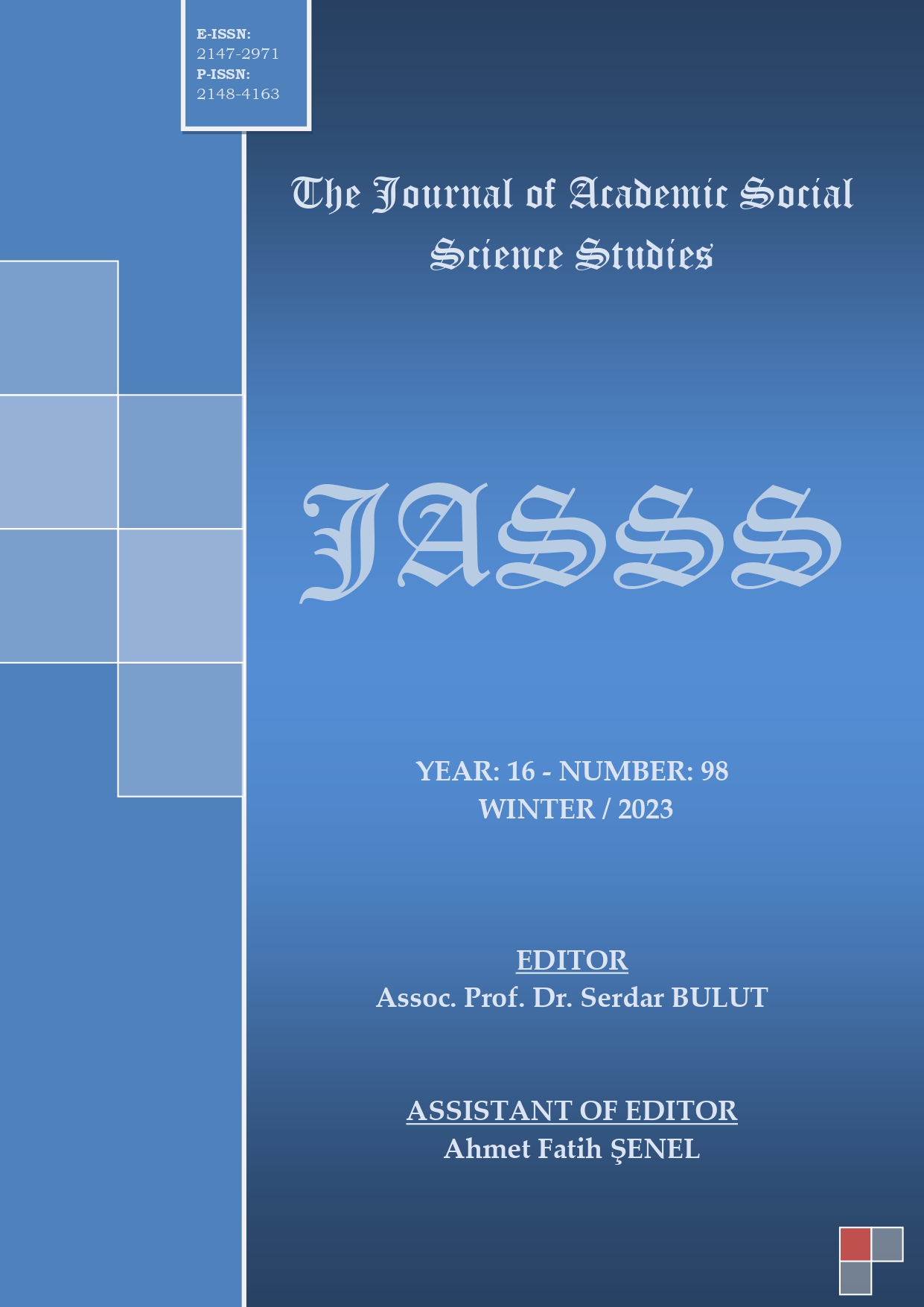Author :
Abstract
Âşık Paşa tarafından 730/1330 yılında mesnevî nazım şekliyle yazılmış olan Garib-nâme gerek muhtevası gerekse dili ve edebî yönü itibariyle dikkat değer eserlerimizden biri olmayı başarmış, adından çokça söz ettirmiştir. XIV. yüzyıl Anadolu’sunda daha yeni yeni filizlenmeye başlayan Batı Türkçesi’nin ilk ve önemli örneklerinden biri olan Garib-nâme, Türk diliyle de özgün eser verilebileceğini göstermesi bakımından kendini ispat etmiştir. Bu mesnevinin en dikkat çekici yönlerinden biri içerdiği konuların 10’un katları şeklinde her bölümde katlanarak artmasıdır. Din ve tasavvuf, aşk, yaratılış, kâinat, ahlak, astronomi, sosyal hayat gibi çok değişik alan ve konularda bilgi ve ders vermeye yönelik olarak yazılmış olan bu eserin hikâyeler, temsil ve teşbihler odağında bir anlatım sergilediği görülmüştür. Özellikle öğretici mahiyette yazılmış olan diğer eserler gibi temsillere çokça yer vermesi açısından dikkat çekici olan Garib-nâme’de kandille ilgili yapılan temsilî anlatım çalışmamızın konusunu oluşturmuştur. Nitekim eserin yedinci bölümünde geçen beşinci hikâyenin yedinci babında insan vücudunun kandile benzetilip, teşbihler eşliğinde bu hususun bilhassa 4849-4910. beyitlerde ortaya konulduğu tespit edilmiştir. Dolayısıyla kandil meseliyle ilgili bir değerlendirmede bulunmanın insanı ve mana dünyasını tanımak açısından önemli olacağına kanaat getirildiği için böyle bir çalışma yapılmıştır. Çalışma, eserde geçen kandil ve bunun karşılığında kullanılan diğer sözcüklerle sınırlı tutulmuştur. Kandilin topraktan yapılan gövdesi ile insanın bedeni, suyu ile canı, fitili ile nefsi, fitili tutan demir ile şeriat hükümleri, asılı olduğu ip ile Kur’an, kandilin yağı ile insanın aklı, yanan ateşi ile de aşkı arasında benzerlik ilişkisi kurulduğu müşahede edilmiştir. Bütün bu yönleriyle kandilin, insanı temsil ettiği sonucuna ulaşılmıştır.
Keywords
Abstract
The “Garibname”, written in the form of a mesnevi by Aşık Paşa in the year 730/1330, has succeeded in becoming one of our remarkable works, both in terms of its content and its language and literary aspects, attracting much attention. As one of the first and important examples of Western Turkish, which was just beginning to emerge in the 14th century Anatolia, Garibname has proven itself in showing that original works can be created in the Turkish language. One of the most remarkable aspects of this mesnevi is the exponential increase in the subjects it contains, multiplying by ten in each section. Written with the aim of providing knowledge and lessons in various fields and topics such as religion and mysticism, love, creation, the universe, ethics, astronomy, and social life, Garibname has demonstrated a narrative centered around its stories, representations, and metaphors. One particularly noteworthy feature of Garibname is its inclusion of themes in multiples of ten in each section, which is a characteristic of the work. The seventh section of the work, in particular, has been identified as addressing the metaphorical representation of the human body as a candle, with this concept being explicitly presented in verses 4849-4910. Therefore, our study focuses on the representation related to the candle in this specific context. Given the importance of understanding the human and spiritual world, it was deemed significant to evaluate the metaphor of the candle in this work, especially since the narrative is rich in representations, much like other instructive works. The study is limited to the candle and other words used in conjunction with it in the work. The study reveals that the body of the candle made of clay is likened to the human body, its water to the soul, its wick to the ego, the iron holding the wick to the principles of Islamic law, the rope from which it hangs to the Quran, the oil of the candle to the human mind, and its burning flame to love. With all these aspects considered, it is concluded that the candle symbolically represents the human being.





